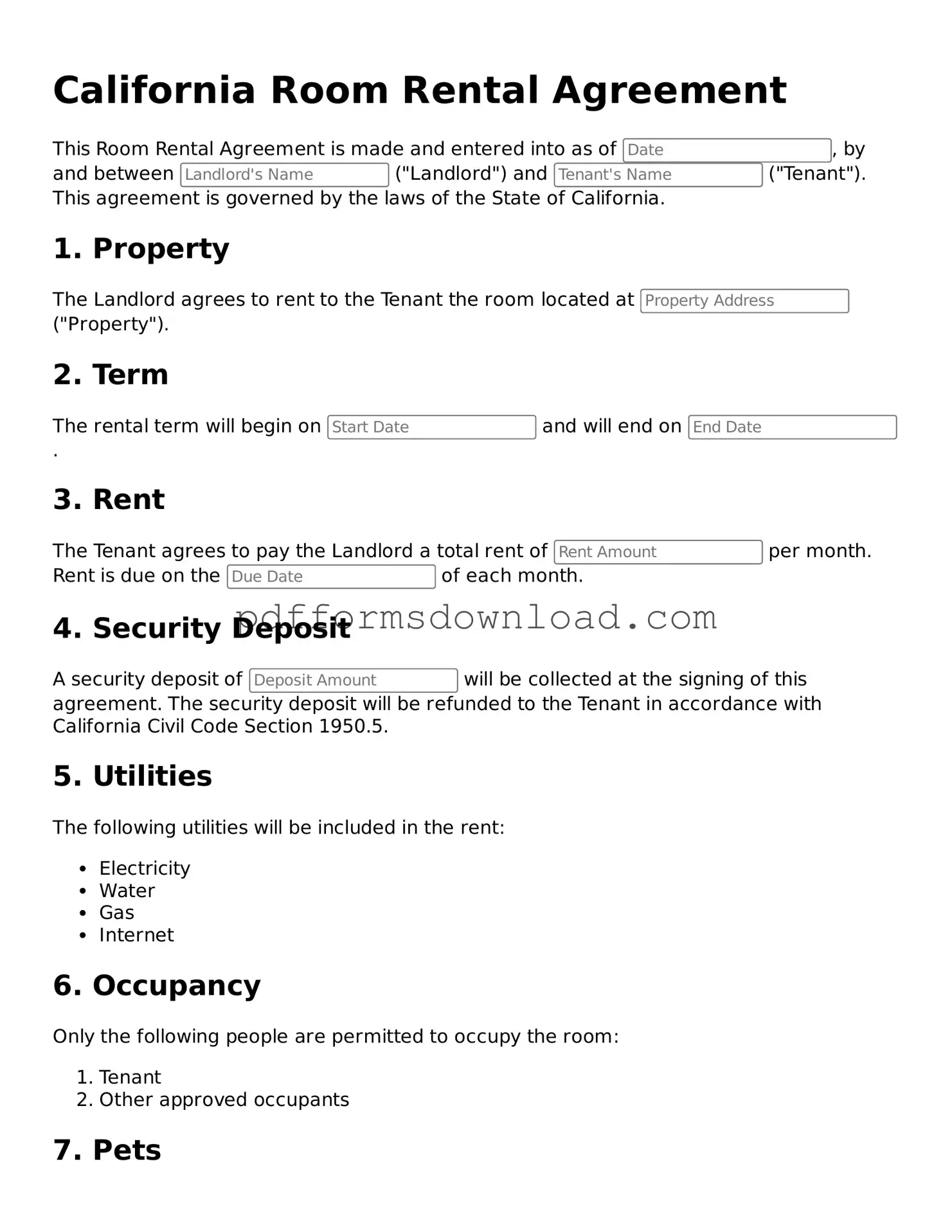What is a California Room Rental Agreement?
A California Room Rental Agreement is a legal document that outlines the terms and conditions between a landlord and a tenant for renting a room within a property. This agreement serves to protect both parties by clearly stating the responsibilities, rights, and obligations of each. It typically includes details such as the rental amount, payment due dates, security deposit requirements, and rules regarding the use of shared spaces.
What key elements should be included in the agreement?
When creating a Room Rental Agreement, several essential elements must be included to ensure clarity and legal protection. These elements typically consist of the names of the landlord and tenant, the rental property address, the duration of the rental period, the amount of rent and security deposit, payment methods, and any specific rules regarding the use of common areas. Additionally, it’s important to outline maintenance responsibilities and procedures for terminating the agreement.
Is a written agreement necessary?
While verbal agreements can be legally binding, having a written Room Rental Agreement is highly recommended. A written document provides clear evidence of the terms agreed upon and can prevent misunderstandings or disputes in the future. In California, having a written agreement is especially important due to specific state laws that govern landlord-tenant relationships.
Can the agreement be modified after it is signed?
Yes, a Room Rental Agreement can be modified after it is signed, but any changes must be agreed upon by both the landlord and the tenant. It’s advisable to document any modifications in writing and have both parties sign the updated agreement. This helps maintain transparency and ensures that all parties are aware of the new terms.
What happens if either party breaches the agreement?
If either the landlord or tenant fails to uphold their responsibilities as outlined in the Room Rental Agreement, it is considered a breach. The consequences of a breach depend on the terms specified in the agreement and California law. Typically, the non-breaching party may seek remedies, which could include demanding compliance, terminating the agreement, or pursuing legal action. It’s important for both parties to understand their rights and options in such situations.
